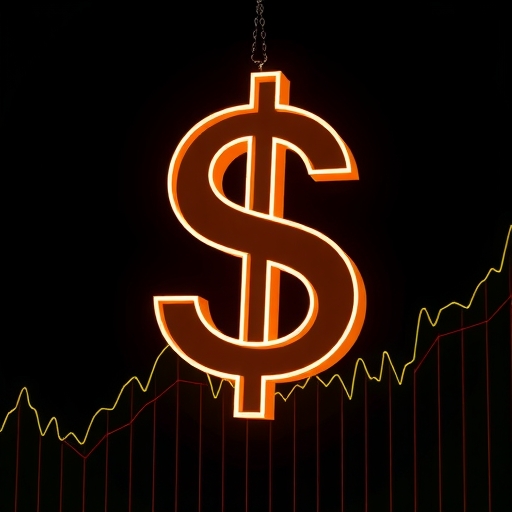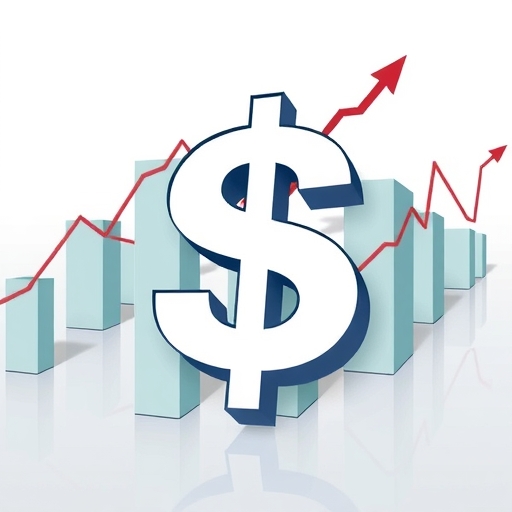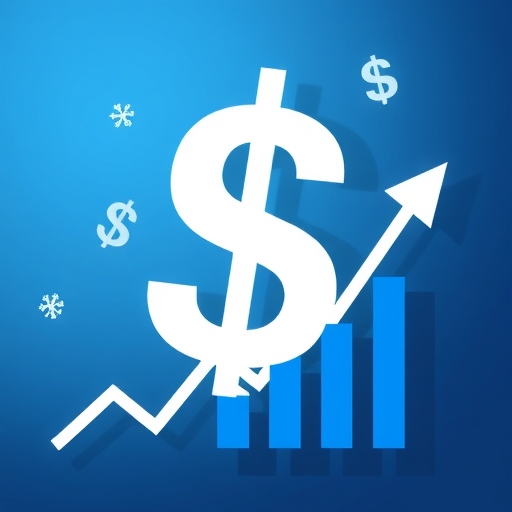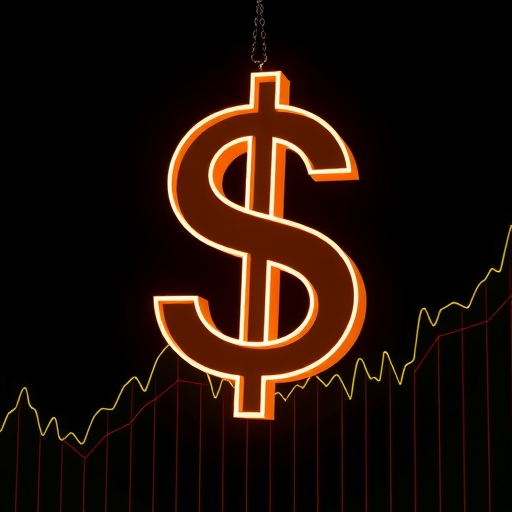Unmasking the True Cost: A Comprehensive Guide to ETF Fees and How They Impact Your Wealth
Are you truly aware of all the costs hiding in your Exchange-Traded Funds (ETFs)? While ETFs are often celebrated for their low costs and accessibility, the full financial picture can be more complex than just the advertised expense ratio. As savvy investors, we must look beyond the surface to understand both the visible and the often-overlooked “hidden” fees that can silently erode our investment returns over time. This guide will meticulously break down these various charges, illustrate their powerful compounding effect, and empower you with actionable strategies to minimize their impact on your long-term wealth. We’ll explore everything from the headline management fees to the subtle market-driven costs, ensuring you have a complete understanding of your ETF investments.

The Foundation of Fees: Expense Ratios, Platform, and Brokerage Charges
When you invest in an ETF, you’re essentially buying a basket of assets managed by a professional fund provider. For this service, and for the privilege of holding your investments, various fees are incurred. These are often the most straightforward costs to identify, yet understanding their nuances is crucial. Let’s start with the most prominent ones.
The most common and visible cost is the **Expense Ratio**, also known as the **Management Expense Ratio (MER)** or **Total Expense Ratio (TER)**. This is the annual cost charged by the fund itself, expressed as a percentage of the fund’s assets. What does this percentage cover? It accounts for the ETF’s operational expenses, including portfolio management, custodial fees (for safeguarding assets), accounting, auditing, legal, and administrative costs. For instance, a broad market index ETF like the Vanguard Australian Shares Index ETF ($VAS) might charge a mere 0.07% annually, reflecting its passive, rules-based approach. In contrast, a more specialized or actively managed fund, such as the Betashares Strong Australian Dollar Complex ETF ($AUDS), could have an expense ratio as high as 1.38%, due to its complex strategy and higher management effort. On average, the ASX-listed ETFs boast an expense ratio of 0.54%, which is significantly lower than the 0.93% average for traditional managed funds, highlighting a key advantage of ETFs. It’s important to remember that while quoted annually, this fee is deducted daily from the fund’s assets, meaning it subtly impacts the Net Asset Value (NAV) of your shares each day.

Lower expense ratios contribute significantly to long-term wealth accumulation. Here are some key benefits:
- More of your investment capital remains invested and compounds.
- Reduced drag on performance, especially during periods of lower market returns.
- Often an indicator of a passive, rules-based strategy, which can be more transparent.
- Greater net returns over extended investment horizons due to less erosion from fees.
To further illustrate the fee landscape, here’s a general comparison of average expense ratios across different investment vehicles:
| Investment Vehicle | Average Annual Expense Ratio (Approx.) |
|---|---|
| Broad Market Index ETFs | 0.05% – 0.20% |
| Actively Managed ETFs | 0.70% – 1.50% |
| Traditional Managed Funds | 0.90% – 2.50% |
| Hedge Funds | 1.50% – 2.00% + 20% performance fee |
These figures are averages and can vary significantly, but they highlight the general cost advantage often associated with passive ETFs.
The typical ranges for MER/TER can vary significantly based on the ETF type:
- Broad Market Index ETFs: These typically track major indices like the S&P 500 or FTSE 100, offering the lowest fees, often between 0.03% and 0.20%.
- Sector-Specific ETFs: Focusing on particular industries (e.g., technology, healthcare), their fees usually range from 0.25% to 0.60%.
- Thematic ETFs: Investing in specific trends (e.g., AI, clean energy), these can carry higher fees, often 0.50% to 1.00%, due to specialized research and narrower focus.
- Actively Managed ETFs: These funds aim to outperform an index rather than just track it, leading to higher management costs, typically 0.70% to 1.50%.
Beyond the fund’s own expense ratio, you’ll also encounter **Platform Fees** and **Brokerage Fees**. Platform fees are separate charges levied by the investment provider or broker you use to hold your ETF investments. These can take various forms:
- Annual Account/Admin Fees: Some platforms charge a percentage of your portfolio value annually, for example, 0.25%-0.45%.
- Trading/Dealing Fees: These are flat fees charged each time you buy or sell ETF shares. Some platforms, like InvestEngine for DIY portfolios, boast no platform or dealing fees, which can be a significant saving for frequent traders or smaller portfolios.
- Withdrawal/Transfer Charges: Less common, but some platforms may charge a fee if you transfer your investments out or withdraw cash.
Then there are **Brokerage Fees**, which are transaction costs you pay to your broker every time you buy or sell shares of an ETF. While many brokers now offer commission-free trading for US stocks and ETFs, these fees can still apply to other markets or specific platforms. These fees are direct costs to you, reducing the capital available for investment or the proceeds from a sale.
Unmasking the Invisible: Hidden Costs That Impact Your ETF Returns
While the expense ratio and platform fees are relatively easy to spot, a significant portion of an ETF’s total cost can be hidden from plain view, emerging only through market mechanics or subtle operational inefficiencies. These “invisible costs” can collectively have a substantial impact on your net returns, often without you even realizing it. Let’s shine a light on them.

Hidden costs can manifest in various ways, often subtly impacting your overall returns. Understanding their sources is the first step towards mitigating them. These costs typically arise from:
- Market microstructure, such as the bid-ask spread and slippage.
- Operational aspects of the fund, including portfolio rebalancing and dividend handling.
- Liquidity constraints of the underlying assets or the ETF itself.
- Taxation events within the fund’s operations that are passed onto investors.
To better differentiate between the types of costs, here’s a quick overview of what to look out for:
| Cost Category | Examples | Visibility |
|---|---|---|
| Visible (Explicit) Fees | Expense Ratio (MER/TER), Platform Fees, Brokerage Fees | Easy to find in PDS/Fact Sheet/Broker Statement |
| Hidden (Implicit) Costs | Bid-Ask Spread, Tracking Error, Slippage, Premium/Discount to NAV, Tax Distributions | Require deeper analysis, market observation, or specific calculations |
Both categories significantly influence your net investment returns over time.
One of the most common hidden costs is the **Bid-Ask Spread**. When you look at an ETF’s price, you’ll typically see two numbers: the “bid” price (the highest price a buyer is willing to pay) and the “ask” price (the lowest price a seller is willing to accept). The difference between these two is the bid-ask spread. When you buy an ETF, you pay the ask price, and when you sell, you receive the bid price. This difference is essentially a cost you pay to market makers for providing liquidity. For highly popular and liquid ETFs (those with high trading volumes), this spread is usually very narrow, perhaps just a few cents. However, for less liquid or niche ETFs, the spread can be wider, meaning you pay a higher “hidden” transaction cost every time you trade.
Next, we have **Tracking Error**. This is a critical concept, especially for passive index ETFs. Tracking error measures how closely an ETF’s performance replicates its benchmark index. Ideally, a passive ETF should perfectly mirror its index, but in reality, this rarely happens. The ETF might slightly underperform or, less commonly, overperform its index. What causes tracking error? It can be due to the ETF’s management fees (which are deducted from performance), differences in how dividends are handled, the cost of rebalancing the portfolio, or even the illiquidity of some underlying assets. A low expense ratio is excellent, but if the ETF consistently suffers from a high tracking error, its real-world performance might still fall short of expectations.
Consider these other subtle, yet significant, hidden costs:
- Slippage: This occurs when an investor pays a higher price than expected for shares, or receives a lower price, due to rapid market movements between placing an order and its execution. It’s more common with large block purchases or sales of illiquid ETFs, where a single large order can move the market price against the investor. Using limit orders instead of market orders can help mitigate slippage.
- Premium to Net Asset Value (NAV): The Net Asset Value (NAV) represents the per-share value of the ETF’s underlying assets. While ETFs are designed to trade close to their NAV, their market price can sometimes deviate. If an ETF’s share price trades at a “premium” to its NAV, it means you are effectively paying more for the underlying assets than they are worth. Conversely, trading at a “discount” to NAV means you’re buying assets for less than their theoretical value. Consistently buying an ETF at a significant premium can impair your future returns.
- Tax Distributions: While ETFs are generally more tax-efficient than traditional managed funds due to their unique “in-kind” redemption mechanism, they can still generate capital gains taxes. When an ETF rebalances its portfolio, selling appreciated assets to maintain alignment with its index, these capital gains can be distributed to investors, potentially creating a taxable event even if you haven’t sold your ETF shares. This is less impactful than in actively managed funds, but it’s still a cost to consider.
The Compounding Trap: How Small Fees Lead to Massive Long-Term Losses
Understanding the individual fees is one thing, but truly grasping their long-term impact requires an appreciation for the power of compounding. We often hear about compounding working *for* us, growing our investments exponentially over time. However, it’s equally potent when working *against* us, silently chipping away at our wealth through fees. Even seemingly small percentage differences in annual costs can lead to staggering losses over a typical investment horizon.

Let’s illustrate this with a simple, yet powerful, example. Imagine you invest $10,000 today, expecting an average annual return of 10% before fees. Now, consider two identical investments, but with different annual expense ratios: Fund A charges 0.50% per year, while Fund B charges 1.00% per year.
Here’s how the difference compounds over time:
| Year | Fund A (0.50% Fee) | Fund B (1.00% Fee) | Difference in Capital |
|---|---|---|---|
| 1 | $10,945.00 | $10,890.00 | $55.00 |
| 5 | $15,645.00 | $15,130.00 | $515.00 |
| 10 | $24,494.00 | $22,780.00 | $1,714.00 |
| 20 | $60,004.00 | $52,063.00 | $7,941.00 |
| 30 | $147,020.00 | $121,797.00 | $25,223.00 |
As you can see, after just 30 years, that seemingly insignificant 0.50% annual difference in fees results in a colossal **$25,223** less capital in Fund B! This example, based on the provided data’s insight that a 0.50% lower fee can yield over $19,500 more over 30 years on a $10,000 investment (assuming a 10% annual return), truly underscores the destructive power of compounding fees. It’s not just the amount, but the lost opportunity for that money to grow itself.
Even a seemingly minuscule difference of just 0.20% in annual fees can have a profound impact over decades, as demonstrated below with an initial $10,000 investment and a 9.5% annual return before fees:
| Year | Fund C (0.20% Fee) | Fund D (0.40% Fee) | Difference in Capital |
|---|---|---|---|
| 5 | $15,648.00 | $15,487.00 | $161.00 |
| 15 | $36,050.00 | $34,606.00 | $1,444.00 |
| 30 | $130,580.00 | $119,006.00 | $11,574.00 |
This further emphasizes how critical it is to pay attention to even minor percentage differences in fees over long investment horizons.
This compounding effect is further amplified by active trading. If you frequently buy and sell ETFs, you’ll incur brokerage fees and potentially wider bid-ask spreads more often, repeatedly chipping away at your capital. This is why a disciplined **buy-and-hold investing** strategy is often recommended for long-term investors aiming to minimize the cumulative impact of these costs. Every transaction comes with a cost, and minimizing those transactions directly translates to more money staying in your portfolio, working for you.
Strategic Cost Control: Actionable Steps to Minimize Your ETF Expenses
Now that we understand the various costs and their compounding impact, the natural next question is: what can we do about it? Fortunately, there are several proven strategies you can employ to proactively minimize your ETF expenses and keep more of your hard-earned investment gains. Smart investing isn’t just about picking the right funds; it’s also about intelligently managing the costs associated with them.
Here are actionable steps you can take:
- Choose Low-Cost Managers: This is often the most impactful decision. Fund providers like Vanguard and iShares are renowned for offering a wide array of highly diversified, low-cost index ETFs. By prioritizing funds from managers with a reputation for competitive expense ratios, you instantly start with a significant advantage. Remember, the average ASX ETF expense ratio is 0.54%, but many excellent broad market index funds are available well below 0.10%.
- Focus on Popular, Highly Liquid ETFs: As we discussed, illiquid ETFs can have wider bid-ask spreads and be more susceptible to slippage. By sticking to ETFs with high trading volumes and large assets under management, you’ll generally benefit from narrower spreads, ensuring you’re not overpaying when you buy or underselling when you exit. Information on fund liquidity can typically be found on exchange websites (e.g., ASX) or fund provider fact sheets.
- Prioritize Buy-and-Hold Investing: This strategy is a powerful defense against brokerage fees and bid-ask spreads. By purchasing ETFs with a long-term perspective and avoiding frequent trading, you significantly reduce the number of transactions, thereby minimizing associated costs. This approach not only saves on fees but also aligns with the compounding effect, allowing your investments ample time to grow.
- Conduct Thorough Research and Read the Fine Print: Before investing in any ETF, diligently review all associated documentation. The **Product Disclosure Statement (PDS)** in Australia (or similar regulatory documents like a Key Information Document (KID) in the UK/EU, or prospectus in the US) is your go-to source for detailed information on MER/TER, management fees, and other charges. Don’t forget to check your investment platform’s fee schedule for annual account fees, trading fees, and any withdrawal or transfer charges. Knowing all the costs upfront allows you to compare options holistically.
- Consider Using Limit Orders: Especially for less liquid ETFs or larger trades, using a limit order instead of a market order can protect you from unexpected price movements and slippage. A limit order specifies the maximum price you’re willing to pay (when buying) or the minimum price you’re willing to accept (when selling), giving you more control over your execution price.
While some platforms, like InvestEngine, offer benefits such as no platform or dealing fees for DIY portfolios, it’s crucial to evaluate these alongside the fund’s own expense ratios. A platform might seem cheaper initially, but if it only offers access to higher-cost ETFs, your overall expenses might still be greater. Always look at the total picture.
Beyond Cost: Evaluating Total Value and Making Holistic Investment Choices
While minimizing fees is undeniably a cornerstone of smart investing, it’s equally important not to let “low cost” be the *only* factor in your decision-making process. Sometimes, a slightly higher fee might be justified by superior value in other areas. This is where the concept of **Total Cost of Ownership (TCO)** comes into play, urging us to look beyond just the MER and consider a more comprehensive set of factors.
A truly holistic investment decision involves weighing several factors beyond just the explicit expense ratio. This comprehensive approach helps ensure you’re getting genuine value for your investment. Key aspects to consider include:
- The ETF’s investment objective and how well it aligns with your personal financial goals.
- The historical consistency of the fund’s performance relative to its benchmark.
- The ease of buying and selling the ETF on your chosen platform.
- Any unique features or benefits that might justify a premium, such as advanced risk management.
The MER, while significant, is merely one component of the TCO. A true assessment of value also integrates the hidden costs we discussed, such as **bid-ask spreads**, **portfolio turnover costs** (which can generate capital gains or trading costs within the fund), and the fund’s **tax efficiency**. For example, an ETF with a slightly higher MER but exceptional tax efficiency due to its in-kind redemption mechanism might actually lead to better after-tax returns than a lower-MER fund that generates more taxable distributions.
When evaluating an ETF, consider these additional factors alongside its explicit and implicit costs:
- Tracking Accuracy: How well does the ETF track its benchmark index? A fund with a low MER but a high tracking error (meaning it consistently underperforms its index) might not be as good a value as a fund with a slightly higher MER but near-perfect replication.
- Fund Liquidity and Size: Larger, more liquid funds generally have tighter bid-ask spreads and are less prone to premium/discount to NAV issues. They also tend to be more robust and less likely to be delisted.
- Provider Reputation and Expertise: Investing with established and reputable fund providers (e.g., Vanguard, iShares, Betashares) often provides peace of mind, access to better support, and a history of reliable fund management.
- Specific Features or Benefits: Does the ETF offer currency hedging, which might be valuable for international investments? Does it provide exposure to a unique or hard-to-access market segment that justifies a higher fee? These specialized features can sometimes warrant a higher cost.
- Diversification: Does the ETF provide adequate diversification for your portfolio goals? A well-diversified core index fund, even with a slightly higher MER than the absolute cheapest option, might offer better overall portfolio stability and alignment with your long-term objectives.
All of this crucial information, from MERs to tracking error data, can be found in official sources. Always consult the fund provider’s fact sheets, the detailed Product Disclosure Statements (PDS) or prospectus, and the exchange’s website (like the ASX for Australian-listed ETFs). These documents are designed to provide transparent disclosure, enabling you to make truly informed investment decisions that align with your financial goals and risk tolerance.
Navigating the intricate world of ETF fees is a cornerstone of intelligent investing. By diligently understanding both the explicit and implicit costs, and by proactively implementing strategies to minimize their impact, investors can significantly enhance their long-term wealth accumulation. Remember, the true power of compounding works both for and against you; by keeping costs low, you ensure it works in your favor, transforming seemingly minor savings into substantial financial gains over time. Smart investing is not merely about chasing returns, but intelligently preserving them.
Disclaimer: The information provided in this article is for educational purposes only and does not constitute financial product advice or investment recommendations. Past performance is not a reliable indicator of future results; capital is always at risk. Investors should consider their own objectives, financial situation, and needs, and seek professional financial advice before making any investment decisions. We do not provide direct financial advice.
Frequently Asked Questions (FAQ)
Q: What is the most important fee to consider when investing in ETFs?
A: The expense ratio (or MER/TER) is generally the most significant and visible fee, representing the annual cost charged by the fund for its operation. However, hidden costs like bid-ask spreads and tracking error also play a crucial role in overall returns.
Q: How do hidden costs like bid-ask spread and tracking error impact my investments?
A: The bid-ask spread is the difference between buying and selling prices, a direct transaction cost. Tracking error measures how closely an ETF mirrors its index; a higher error means the ETF might underperform its benchmark, eroding your returns over time even with a low expense ratio.
Q: What’s the best strategy to minimize ETF fees over the long term?
A: To minimize fees, focus on choosing low-cost index ETFs from reputable providers, prioritize highly liquid funds, adopt a buy-and-hold strategy to reduce transaction costs, and always thoroughly review the Product Disclosure Statement (PDS) for all charges.



No responses yet